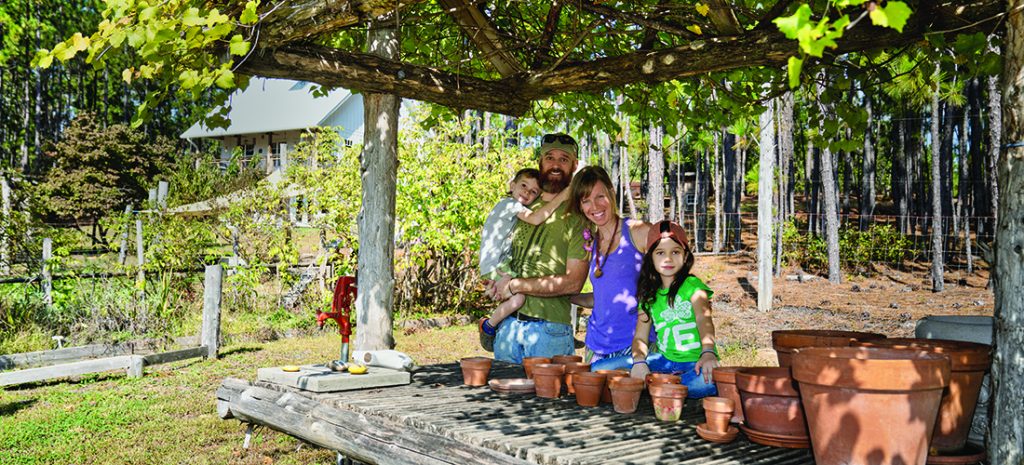
Fly away home
By Amberly Glitz Weber • Photographs by Laura Gingerich
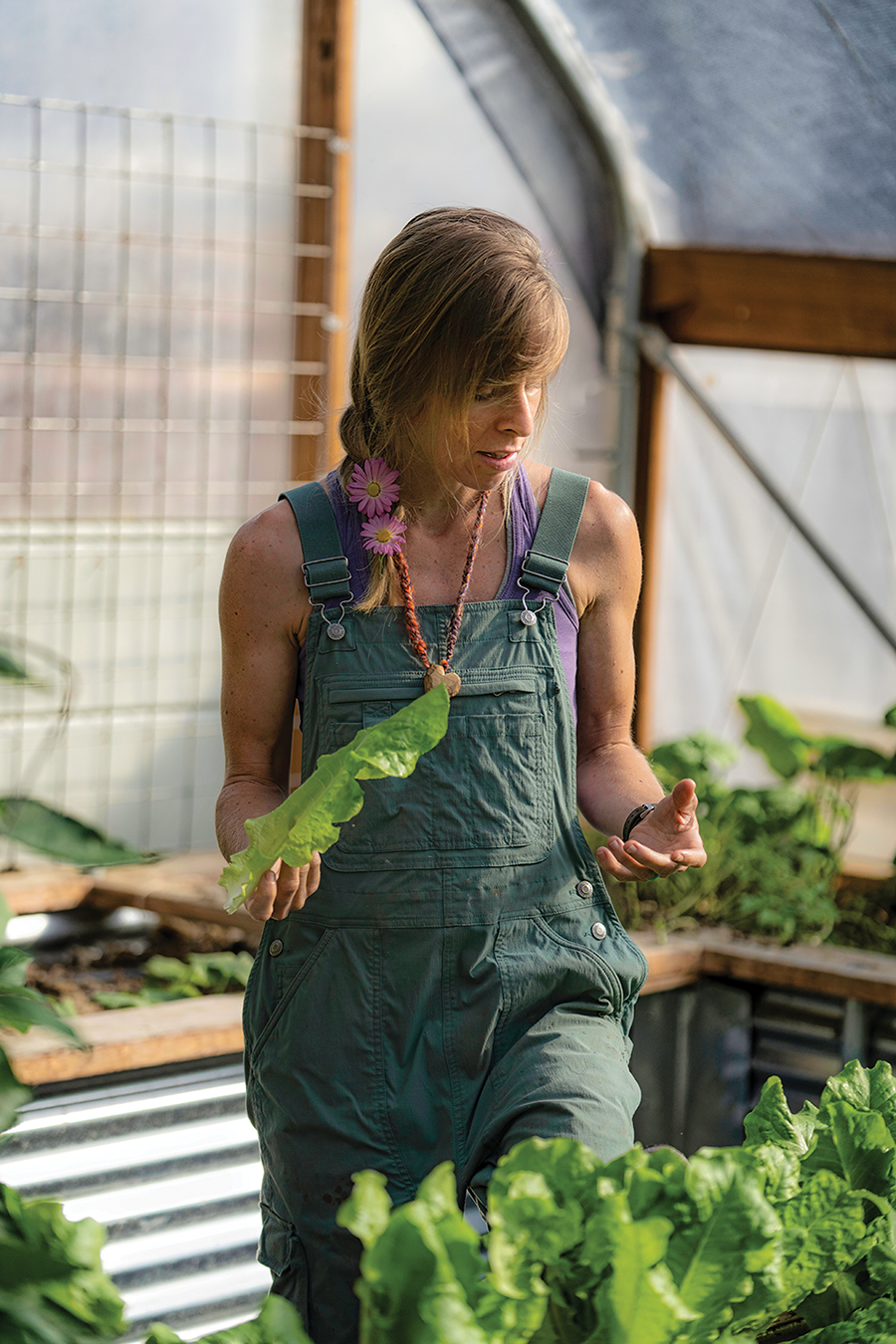
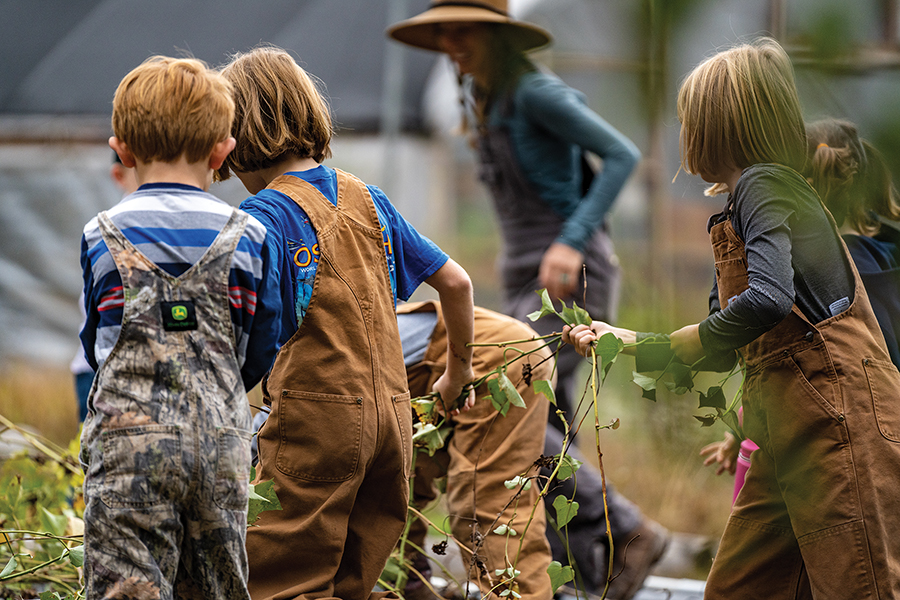
Children’s voices lilt and pitch as they pile out of minivans in a dirt parking lot and file down a well-tended forest trail deeper into the woods. It is a cool morning with a mist in the air and the sun dappling through the pine trees. They pass animal pens and an apple orchard. Hens cluck to the anthem of a large Black Copper Maran rooster. Goats bleat and a large sow snuffles into her feed trough.
As the children shuffle down the sand path into a forest clearing and settle onto log seats around a stone fire circle, a woman’s voice begins singing softly: “Good morning dear friends/so glad to see you.” It is a gentle, untrained voice that carries a smile in it as the children settle into rapt attention.
This is the daily ritual at Ladybug Farm, Shawna and Jared Fink’s 16-acre Pinebluff farm that hosts a variety of nature immersion classes and other programs. Such attentiveness on the part of preschoolers may be difficult, if not impossible, for most parents to imagine. Is it magic that holds them spellbound on their log seats, cradling a hot cup of tea from homegrown tea leaves and nibbling at fresh-baked bread? If so, it is a magic made wholly by the woman with kind eyes singing on the other side of the circle.
Shawna did not grow up with a farming background in her home in upstate New York, though she did live in a rural community “with more registered dairy cows than people,” she says. Her father’s garden offered a place for special time spent together after her parents’ divorce, and long walks in the woods accompanying him in his hunting and trapping were treasured. “I didn’t realize at the time how important and sacred nature was to me, but now, reflecting on it, I think it led me here today,” she says.
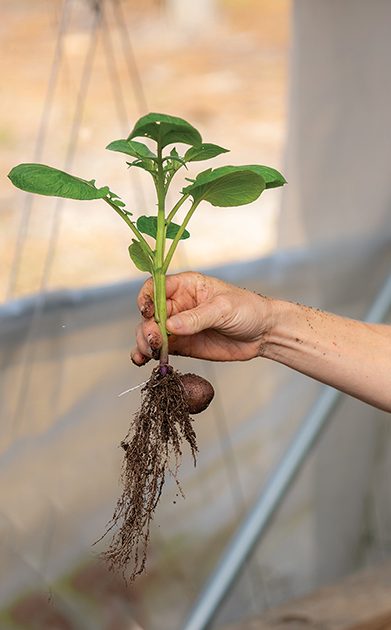
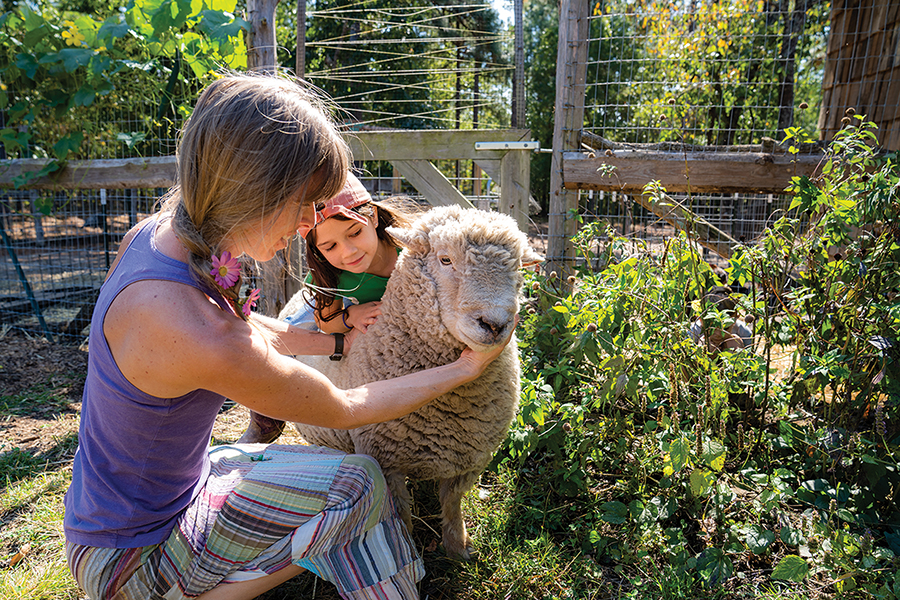
For a woman so integral to this family farm and forest school, it was a gradual metamorphosis — Shawna never even intended to leave her hometown. After starting a degree in art and art therapy, she changed over to education. Preparing herself for the New York State school system, Shawna added a concentration in high school math to her undergraduate degree in elementary education and special education with an art minor. “I love doing things, and learning, and I’m a believer you can just keep learning your whole life,” Shawna says.
The following year, Jared’s job took them to Pennsylvania, where Shawna planted the first of many rudimentary gardens that would follow her from place to place.
“We had a little apartment, and we were on the second floor so I had no yard,” she says. “I asked the neighbor, ‘Can I put a few things in the garden?’ A couple of months later, it’s like beans, huge cosmos, sunflowers, a little bit of lettuce and a couple of carrots — enough to feel that connection to the earth.”
Shawna finished her master’s degree in curriculum and instruction while in Pennsylvania. “The plan was to return to New York. A lot of people were pushing me toward administration and leadership, but then you’re so disconnected from the children,” she says. “So, curriculum and instruction was a great outlet for me.” It also gave her the opportunity to begin incorporating Waldorf school principles into her educational philosophy.
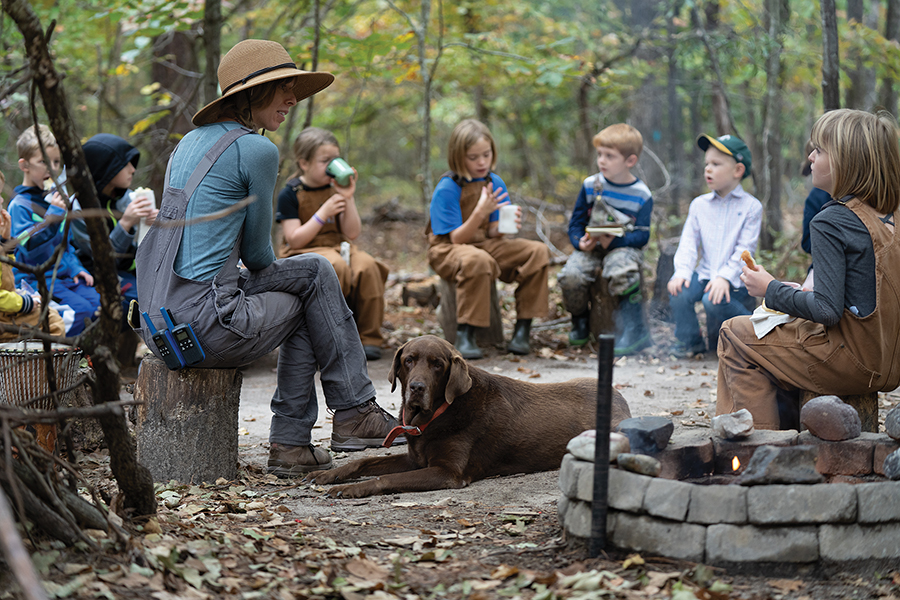
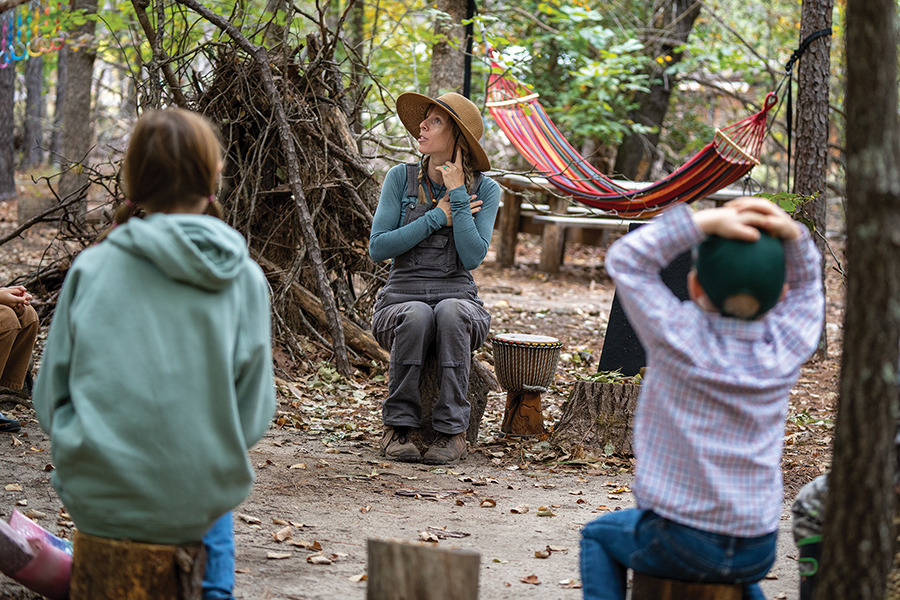
With that degree complete, Shawna was ready to find work in her field, and Jared was willing to follow wherever that led. They searched from Florida to Hawaii to Thailand before a cousin in Sanford pointed them toward North Carolina. An interview with Hoke County, followed by an immediate job offer, brought them south.
It was a difficult start for a first-year teacher and a daily battle. “I felt I was needed there, but I was also passing the gardens of Aberdeen Elementary every day on my commute from Moore County, and I really wanted to be at that school,” she says. Shawna joined Aberdeen as a third-grade teacher the next year, and her “heart fell in love with it.”
While at Aberdeen Elementary, Shawna taught inclusion to a third-grade class containing children of different ages and varying abilities. Children with special needs, as well as those considered gifted, all had to be tested at a third-grade level. Using differentiation and small groups, she got amazing test results, winning The Growing to Greatness Award. She led nationwide classroom management workshops through FoodCorps, sharing the feasibility of getting kids outside and managing children in an outdoor setting with other teachers.
“There’s something so wholesome to me that even when I was teaching, gardening was something that I did,” Shawna says. Third-grade curriculum included the functions of the stems, roots, leaves, area, perimeter — answers to all of which were to be found hands-on in the garden.
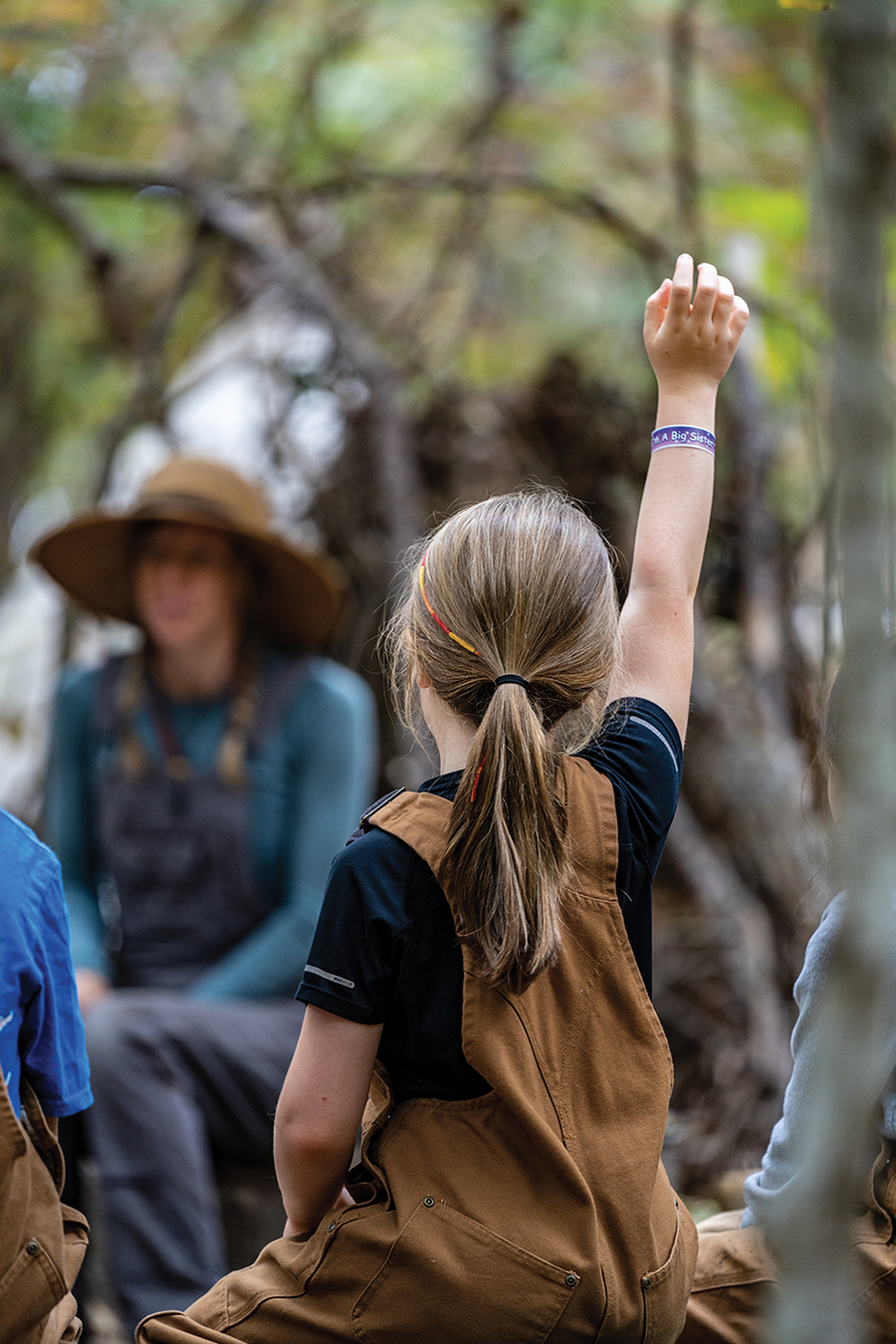
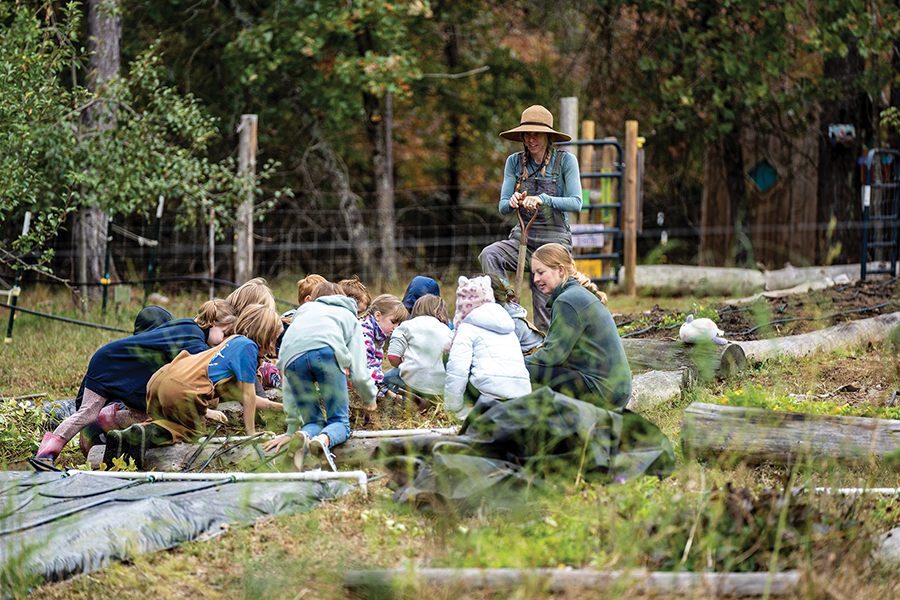
“The kids knew, every Friday, you bring your boots, you’re going out rain or shine in the garden and doing things. So, I was already doing that a lot, and it filled my soul.” She experienced the growth of a child who had required police restraint in his own home, isolated by severe behavioral issues, for whom a daily start in the garden was life-changing.
“I saw the changes that happened in my children when I allowed them to go out in the garden every morning,” Shawna remembers. “It just changed the whole dynamic, responsibility level, the attitudes of my children, it was incredible.” She gloried in watching her class develop a connection to their food, fondly remembering a precocious child’s exclamation,“OMG, this broccoli doesn’t even need ranch dressing!”
After advocating for the interests of her self-contained classroom and the individuality she felt necessary for the success of all her children, mass curriculum changes caused her to depart public education. Unsure of her next step, she knew the one constant was that it would involve nature. “To see children who don’t have that connection to their food develop that connection really changed me, and so when I left teaching that was still a very big part of what I wanted to do,” she says.
The road to Ladybug Farm continued to meander, as she launched a landscape consulting business but missed working with children. Motherhood came and with it a resurgence of her interest in childhood education, the richness of Waldorf and myriad other doctrines offering enrichment to the whole child.
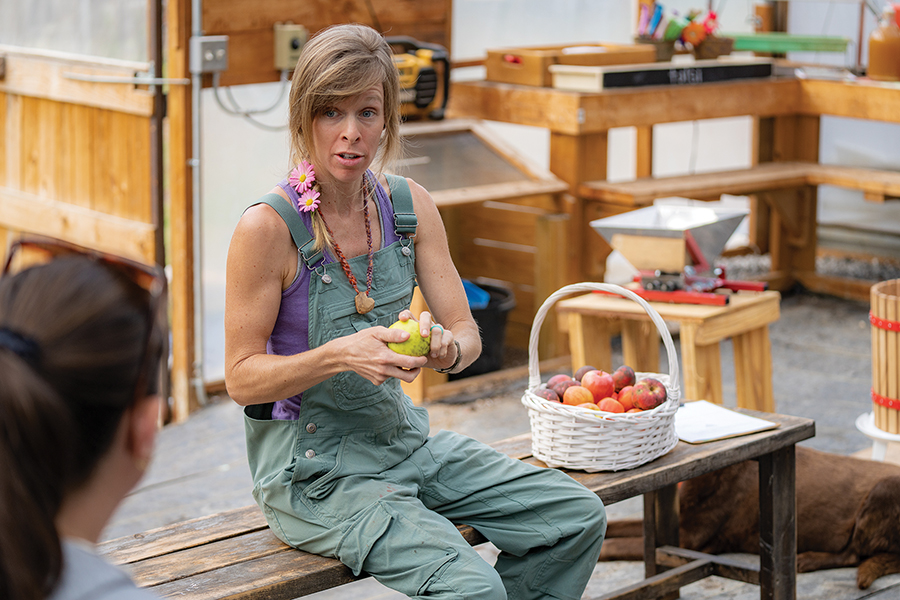
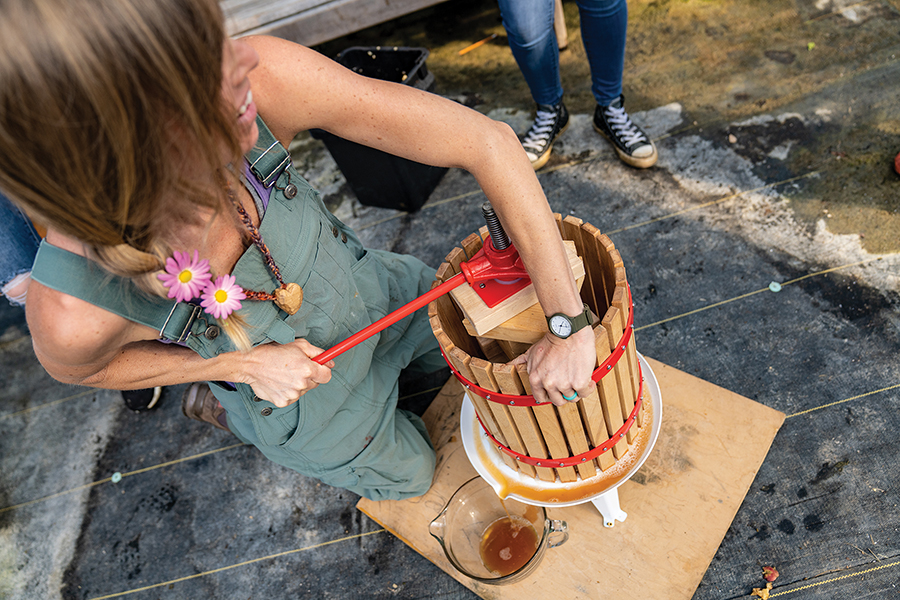
The Finks’ final move to their Pinebluff land and the adventure of building their own home while living in a fifth-wheel RV brought another whirlwind of activity. “We were in the camper before we even had a well dug, and borrowed a hose from the neighbor’s house,” Shawna says. “We could have workmen running power tools or air conditioning, but there just wasn’t enough for both.” Their second child was born and the family moved into the completed home when he was 6 months old. “We made the most of it, and I was so happy, and excited, but it was nice when we moved into the house. We called it our castle, because it seemed so big.”
Throughout the frenzy of construction, a newborn, and building the infrastructure of a fully functioning farm, Shawna continued to host play dates and draw her community into the nature they had cultivated. As the farm grew she began hosting field trips for local schools and her dream along with it. “I want children and families to develop a connection with nature. I want a community — that is my goal. A community-based farm where people can come to develop a connection with nature. The school started from there, with a few children in the fall.” The first session hosted an autumn-only program, which eventually grew to a full year.
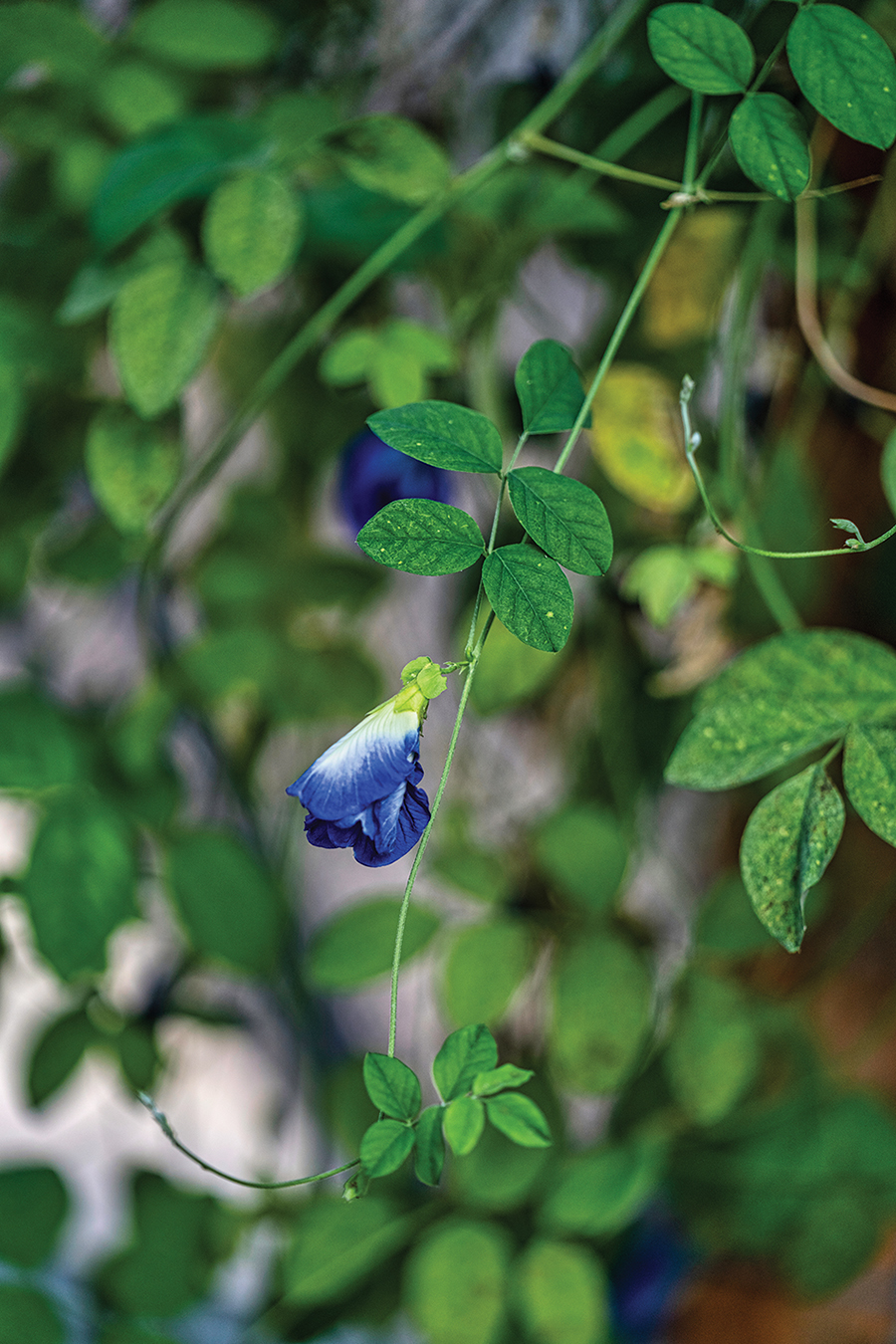
 Like the apple orchard that started as a testing ground for cider varieties, the programs at Ladybug Farm have blossomed naturally over time. The Nature Immersion Forest Kindergarten for 3- to 6-year-olds led organically to the Nature Immersion Forest Homeschool program, as children who aged out of the first group couldn’t bear to leave the farm entirely. The kindergarten, now in its fifth year, has grown to two days a week, as Shawna adds more Waldorf rhythm and handicrafts. The Finks finished their hoop-style greenhouse, which grew from a desire to create a wheelchair-friendly space with wide aisles and raised beds. Forest classes benefit from the extended growing period and are able to harvest the fruits of their labors before summer vacation. Adults wanted to join the community, sparking a Winter Greenhouse Gardening Program. Jared continues to expand his passion project, LBF Carpentry, with the twin goals of crafting heirloom furniture while offering community workshop space and woodworking classes.
Like the apple orchard that started as a testing ground for cider varieties, the programs at Ladybug Farm have blossomed naturally over time. The Nature Immersion Forest Kindergarten for 3- to 6-year-olds led organically to the Nature Immersion Forest Homeschool program, as children who aged out of the first group couldn’t bear to leave the farm entirely. The kindergarten, now in its fifth year, has grown to two days a week, as Shawna adds more Waldorf rhythm and handicrafts. The Finks finished their hoop-style greenhouse, which grew from a desire to create a wheelchair-friendly space with wide aisles and raised beds. Forest classes benefit from the extended growing period and are able to harvest the fruits of their labors before summer vacation. Adults wanted to join the community, sparking a Winter Greenhouse Gardening Program. Jared continues to expand his passion project, LBF Carpentry, with the twin goals of crafting heirloom furniture while offering community workshop space and woodworking classes.
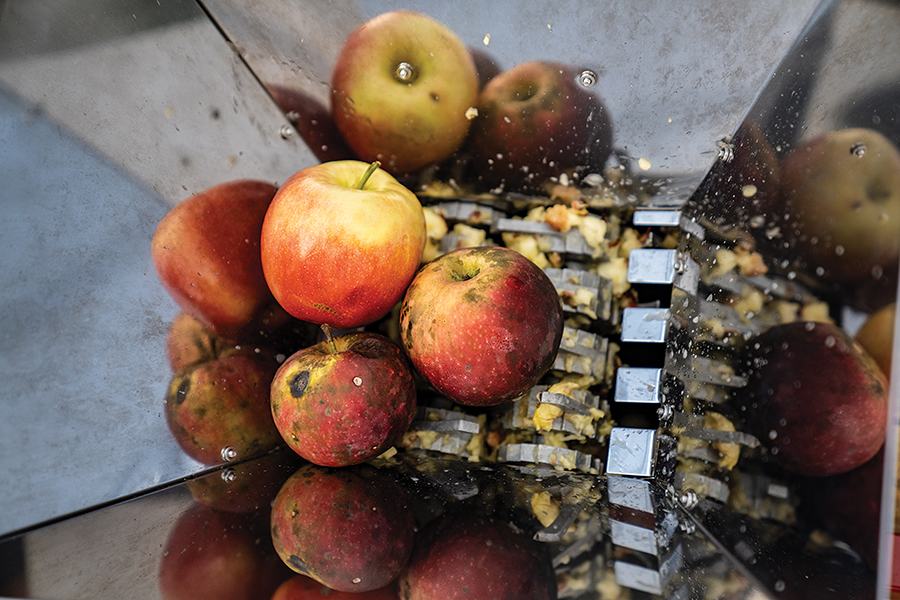
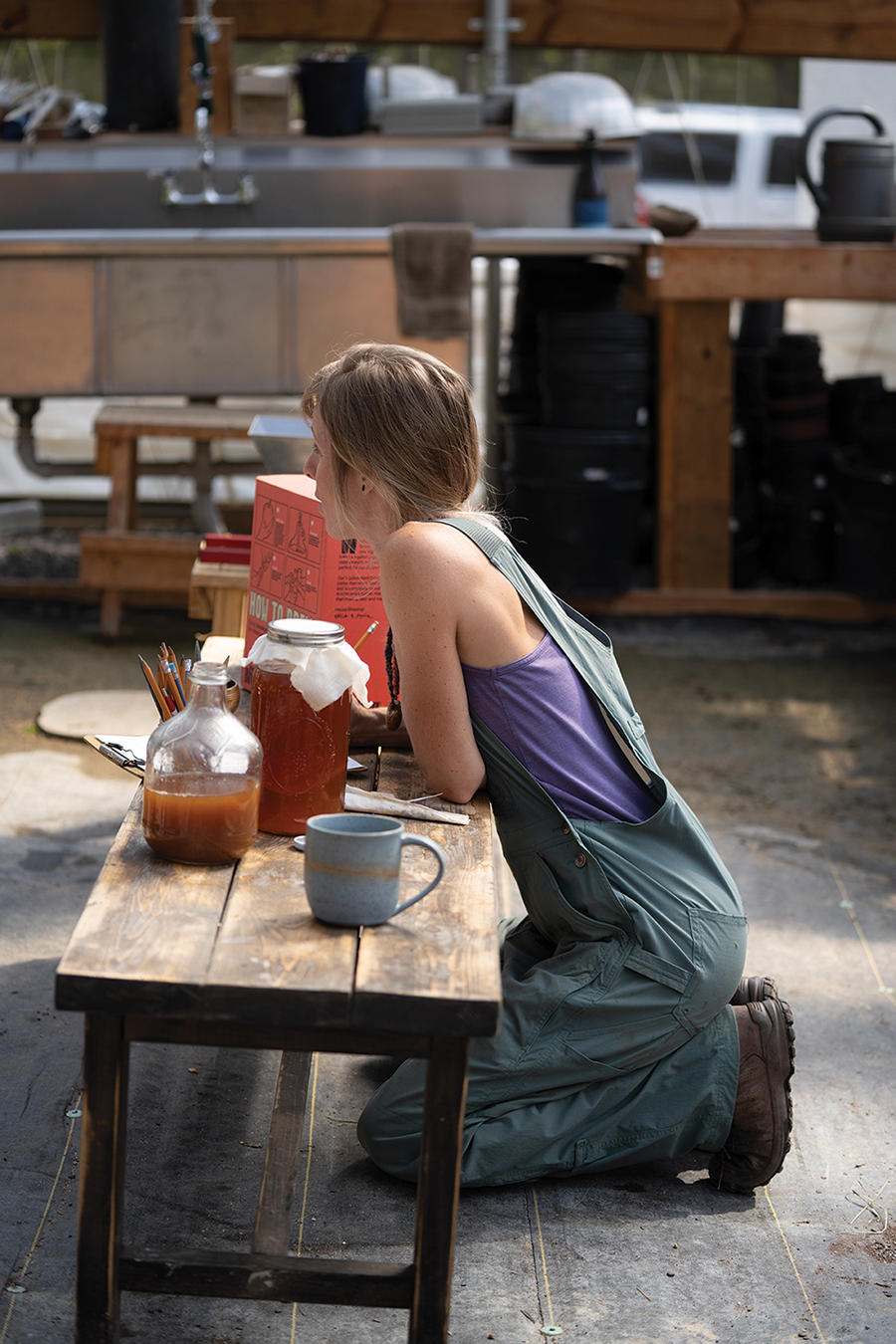
As full as life is at Ladybug Farm, it remains an integrated part of its Sandhills community. “I really like chocolate, but you can’t grow chocolate here,” Shawna says with a smile. “So everyone thinks, ‘Oh you’re self-sustaining, you don’t need anyone else.’ No, self-sustainability is never going to be the goal — you can be community sustainable. And you can go to Java Bean and get your coffee beans. And then go here and get something else. But you’re always going to need your community.”
The home Shawna and Jared built looks out on a garden, bees from their apiary buzzing through the celery stalks while ducks waddle into a stock pond. In early spring, the white “castle” on the hill will attract its namesake ladybug in droves, carpeting its southern walls in the sunshine. The insect has brought a fitting name to this 16-acre farm. Dainty and colorful, they may not seem particularly fierce and yet one ladybug can decimate 5,000 aphids over the course of its lifetime. It is a telling reminder of the power a single person can have on their own environment. One Shawna Fink keeps in mind, as she tends deep roots of her own at Ladybug Farm. PS
Aberdeen resident Amberly Glitz Weber is an Army veteran and freelance writer. She’s grateful for every minute spent out of doors, rain or shine.
